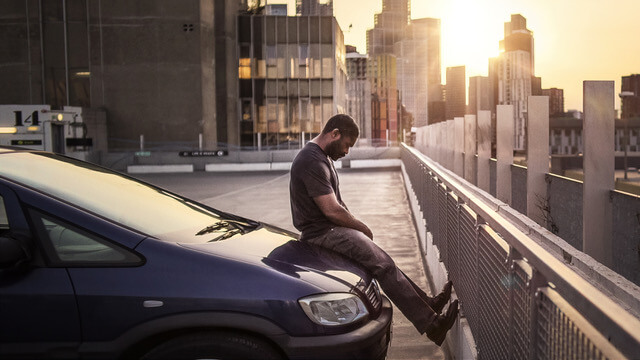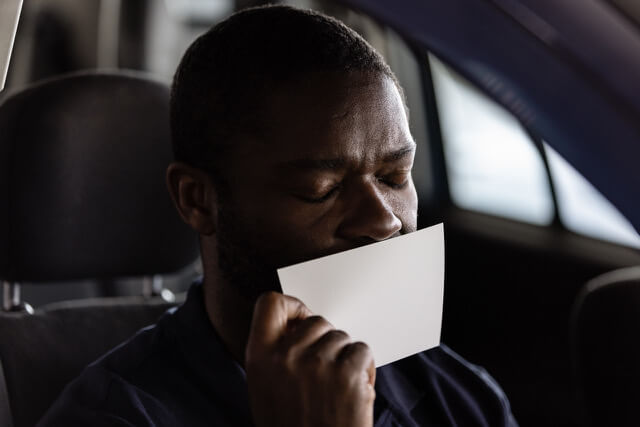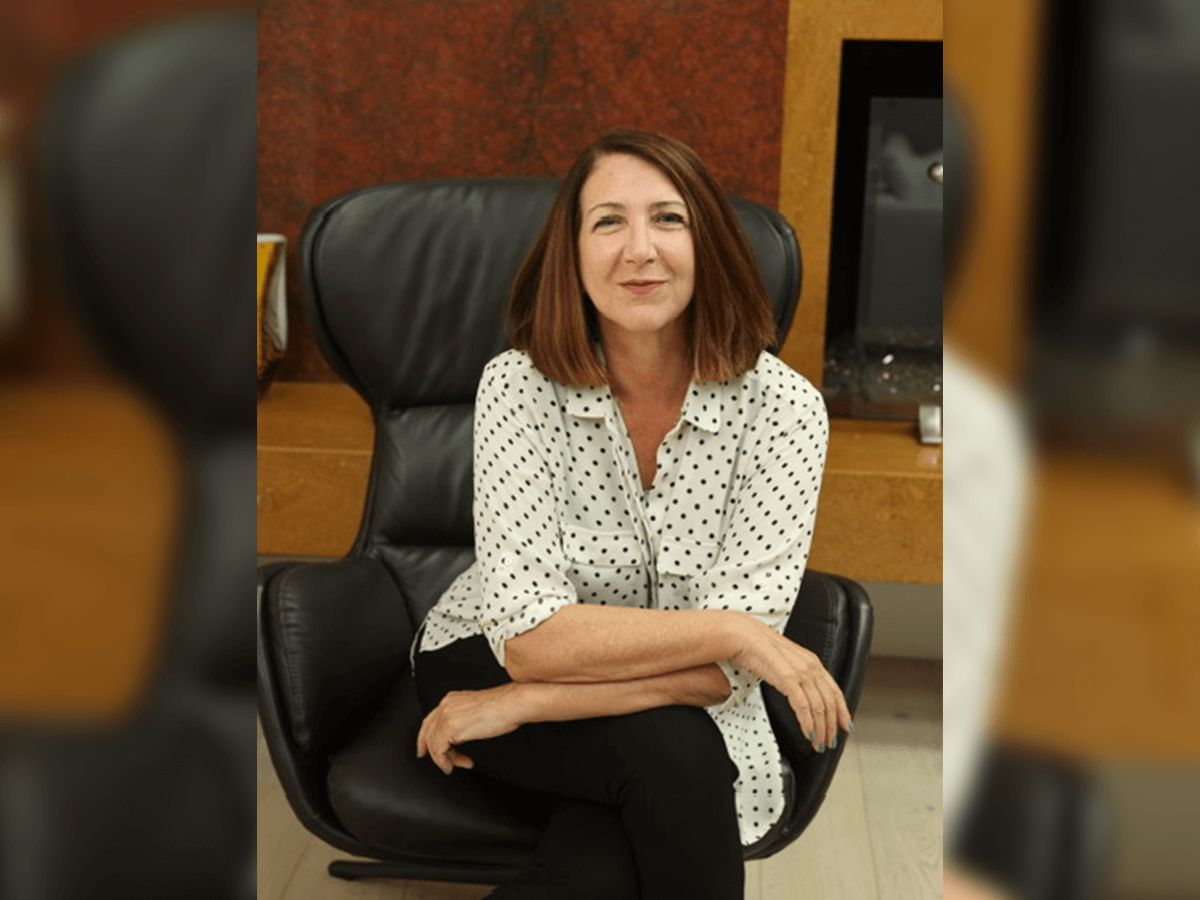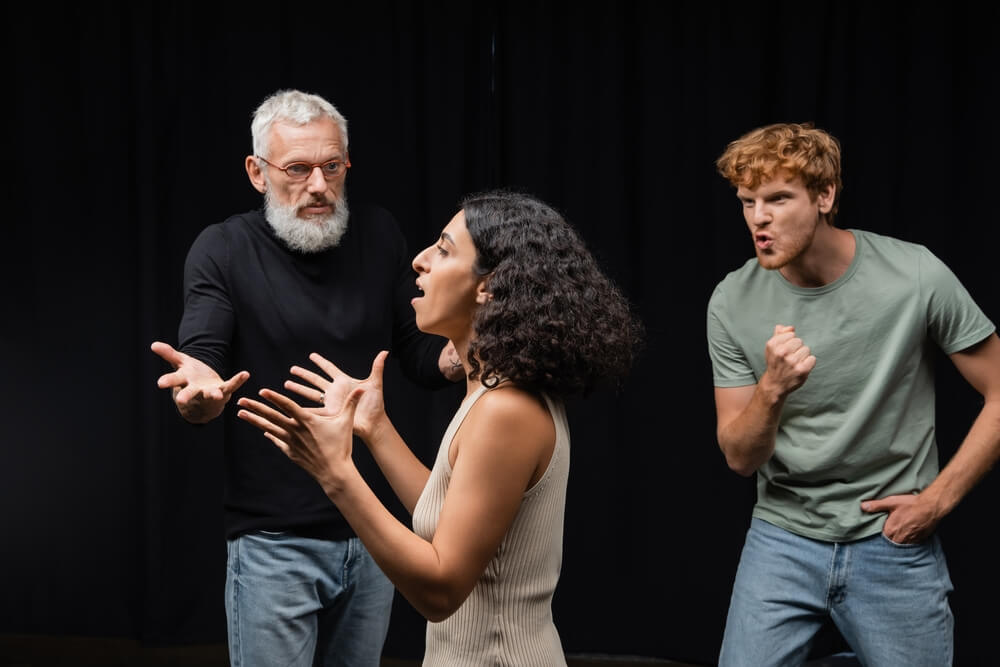How Misan Harriman Assembled the Pieces of His Award-Winning Short ‘The After’
Nigerian-born British photographer Misan Harriman has photographed a range of celebrities from Rhianna to Angelina Jolie to Tom Cruise.
A close friend of the Duke and Duchess of Sussex, Harry and Meghan, Harriman has photographed many of their important life moments, including the couple’s pregnancy announcement and Baby Lilibet’s official portrait. However, Harriman is far from a celebrity photographer.
A social activist, his pictures of the Black Lives Matter protests are some of the most widely circulated photographs in civil rights history. His series of photos of people living through the COVID-19 lockdown were featured in a project called Lost in Isolation in the hopes of bringing his community together. He is also the first Black photographer to photograph the cover of British Vogue in the magazine’s 104-year history.
Now, Harriman goes from still photographs to moving pictures with his short film, The After. The 18-minute film stars David Oyelowo (who also produces) as a successful family man whose life changes instantly when he suffers a horrific tragedy and must figure out how to move on.
The After won Best Live Action Short at the HollyShorts Film Festival in August, making it eligible for Oscar consideration. It is currently streaming on Netflix.
In an exclusive interview with Casting Networks, Harriman details his experience as a first-time filmmaker, explains why he tackled the film’s topic and proves how it’s never too late to do what you love.
The After deals with some heavy topics – loss, moving on in the face of tragedy and those who are quietly suffering inside. What made you choose these themes for your directorial debut?
I needed to make something to make people feel that it’s okay not to be okay, to have them recognize their invisible wounds and not have shame in bearing the weight of this thing called life. Off the back of COVID, off the back of George Floyd and off the back of three of the craziest years humanity has had in a long, long time, I don’t think anyone’s okay.
Chronic depression and suicide are at the highest numbers it’s been for generations. People are struggling. If I can make something that someone watches and their shame starts to climb out of them, then that will be our greatest achievement with a film like that.
I think there’s a lot of healing that is needed in the world right now. Art has the soft power of not judging. Hopefully, David [Oyelowo] and all the extraordinary souls that have been involved in making this film are making a crescendo of hope and healing in 18 minutes of your time.
Speaking of David, how did you manage to get him on board your movie, along with the rest of the cast?
I won the lottery, quite frankly. I DM’ed this man whom I have idolized for 25 years. He’s been someone I’ve looked up to and we didn’t know each other. I DM’ed him on Instagram. He never checked his messages, but on that day, he did.
He was aware of my photography and was a fan of me as an image maker. I said, “I’m thinking of getting into the movies,” and he was like, “let’s talk.” From that moment on, he was in and that was the anchor.
To have that kind of talent decide that they want to go on their first journey into this medium gave me so much safety. He’s also Nigerian-born like me, raised in England like me, similar in age to me. There are so many nuances in our relationship, which meant that although we were just getting to know each other, I felt like I had known him for generations. I felt like I knew him before I knew myself. There was that level of emotional connection.
For your first outing as a director, you experienced a lot of firsts, from casting to lighting to costuming, etc. Tell me about some of them.
I was a kid in a candy store. Although it was my first time, it felt like I was finally in the village that I’d been looking for. It’s like I’ve been wandering the world and looking for this place and finally, I’m here.
I worked with Aisha Bywaters, a Black woman and a casting director, which is rare, especially in the UK. I worked with my extraordinary producer, Nicky Bentham, who had just made The Duke with Helen Mirren and Jim Broadbent. We were very lucky to get (director of photography) Si Bell, whose work, particularly on Peaky Blinders, is just so strong. All these people were available and they wanted to go on this journey with this [unproven] entity when it came to film.
How was working with all the departments?
Casting children is difficult and we were lucky to get the young [girls] in this film and work with their chaperones and parents. Working with really good extras, location managers and stunt coordinators — all were firsts for me and incredibly enjoyable. It was amazing to learn — from costumes to how we do blood on a knife realistically or the right way to lay down a lens on a jib shot with harsh lights shooting with a large format camera. I could go on all day.
I’m very passionate about the process, but I’m also very passionate about the respect I have for the orchestra that is filmmaking. I love the passion of all the different people who do different things, from hair and makeup to light, sound, all of it.
All of that for me is unique because I don’t have that in photography. I have my camera and I find stories to tell, but this was a much more collaborative process, which I loved.
 Photo courtesy of Misan Harriman.
Photo courtesy of Misan Harriman.What was the post-production process for you like?
Our editor, Aggela Despotidou, was amazing. I was like a sponge, sitting next to her. The thing about editing is trimming the fat per se without losing the story. Some directors may find it quite heartbreaking to let go of certain things.
I always try to have a bird’s eye view of what we’re trying to do in 17 to 18 minutes. Of course, you have to make allowances for certain things that won’t make the cut, but what we all refused to do was lose any emotion. Emotion was key. That stayed.
There was no scene we could walk away from if it had the level of emotional honesty we felt was needed to bring the narrative to life. That was our focus.
The song that comes on at the end, Let It All Go, was so beautiful and cathartic. How did you find it and come to use it for the film?
I fought so hard for this song because it’s a big hit by a brilliant song singer-songwriter called Birdy in a duet with another great singer called Rhodes. I’ll be honest with you, that song, in many ways, saved my life in my mental health journey.
I can have very large anxiety attacks and I use music to simmer, to bring me back to a place where I feel safe. That specific song is part of a playlist I use that brings me back to a place of humanity and self-love.
It wasn’t just some random song that I liked, it’s a song that has a deep, deep personal connection to my journey. I spoke to Netflix and my producer and said, “It’s got to be this song.” We weren’t sure whether we’d be able to license it. When we were able to speak to the record folks and I did my pitch to them, they finally agreed. I’m really happy to finish the film in that way.
Now that you reflect on this filmmaking experience, what are your thoughts?
Life has a way of leading you to the right place when you begin to love yourself. I describe this moment in my life and this film as an act of self-love.
For me to feel that the little boy who was always afraid of the world [and] is now in the body of the man who is brave enough to have a point of view, feels like an act of self-love. That’s why this film will forever be so special regardless of what happens. It lets me know that maybe I do have a point of view that people will respond to.
Also, for men and women who may be in careers they’re not happy about, or not following their passions, I want to be a living, breathing example of what it is to take the road less traveled in later life. That could be being a florist, taking those tap dancing lessons or trying calligraphy. Or picking up a camera and taking still and moving images.
This (experience) has been the culmination of the little boy who always wanted to tell stories and the man who is now able to.
 Photo courtesy of Misan Harriman.
Photo courtesy of Misan Harriman.You have photographed some of the most well-known people in the world. You’re a celebrated civil rights photographer. You made history with British Vogue magazine. Looking at your photography, I can’t picture you being a little boy afraid of the world! That work takes bravery.
It’s interesting because everything you’ve said all happened since the summer of 2020. Just imagine, I had a whole life beforehand. This is what I love sharing, because if it could happen to me in my forties…. All those extraordinary things – the Vogue, the images, the high-profile people and now this film – all happened literally in the last three years. Before that, I never thought I even deserved to have people consider me as an artist.
Why?
I’m dyslexic. I struggled at school, I dropped out of university. A lot of the systems that are in place in the educational world are not designed for people who process the world the way I do. If all the benchmarks tell you that you’re not smart or you are slow, then of course you’re going to believe it, especially in your formative years.
When I met my wife, this lady fell in love with all the parts of myself that I was ashamed of. She was the one that bought me the camera. The rest, as they say, is history.
I think the way you process the world is your superpower. It’s enabled you to take impactful photographs and now make an impactful film. What do you make of that?
I know that my art is not just about entertainment. It’s about survival. Film, music, poetry and books – they’ve never been just about having fun for me. They’ve allowed me to love myself and what I could be.
In the ‘great why’ of our existence, I found the answers in the notes of songs, in the pages of books and in the sweet territory of cinema itself. Not everyone understands how much of a gift that is.
With me having the platform that I’ve been afforded in the last three years, my work has to be intentional. It has to try and reach into the parts of yourself that you sometimes either don’t know about or you’re running away from. It has to be a mirror of which you see your humanity. That’s the art I want to make.
This interview has been edited for length and clarity.
Casting directors use Casting Networks every day to discover people like you. Sign up or log in today to get one step closer to your next role.
You may also like:
- Jalen Thomas Brooks on Learning From Horror Director Eli Roth on the Set of ‘Thanksgiving’
- Casting Director Victoria Thomas Talks ‘The Morning Show’ and Its New Character
- Casting Director-Turned ‘May December’ Screenwriter Samy Burch Discusses How the Screenplay Changed Her Life




